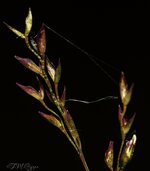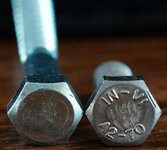sorry, I'm late to the thread.
- disable focus peaking or set "Peaking Level" to the lowest setting available (Low I think). Focus peaking may be useful for video or a less "focus-nailed" demanding photography genre like landscape, but for macro photography it's mostly useless.
- use focus magnification to help you nail the focus. as neither the lens, nor the body, has stabilization, it is going to be hard, but it gives the best results. (EDIT: well, a tripod would give the best results, but chasing insects with the camera set on a tripod is a pain in the neck).
as the lens is fully manual, focus magnification won't kick in when you turn the focus ring. you can assign it to any custom button or even other buttons and use it whenever you want.
- I suggest sticking to f/8 or f/11 to get the sharpest images (I prefer f/8), you can go wider to get more background separation, being aware that depth of field is going to be shallower. if you use smaller apertures, any benefit on depth of field is going to be weakened by diffraction softening. sometimes, when I want more depth of field, instead of using a smaller aperture, I just step back a bit and crop later in post. depth of field is highly dependant on the distance to the subject, so if you increase the distance to the subject by stepping a bit back, you also increase the depth of field.
- to get the best results, full manual control of everything is the best practice, at least for macro and specially if you are going to use a flash. I suggest to set the camera to Manual mode and use the flash also in manual mode. from what I've read in your comments, you don't have any alternative with the latter. your lens is already fully manual, so one less thing to worry about.
set your ISO to 100, the shutter speed to 1/160 (if the flash is HSS capable, you could use a higher shutter speed, but the flash itself is the one that's going to freeze any movement) and the desired aperture.
- to focus manually, a good practice is to set the focus distance or magnification first, then place the square for the focus magnification where you want the focus to be, zoom in (twice if needed as your camera has two different magnification settings), move slowly back and forth, as if you where rocking, until you nail the focus and shoot. it may seem difficult at first, but actually it's easy getting used to do it that way.



